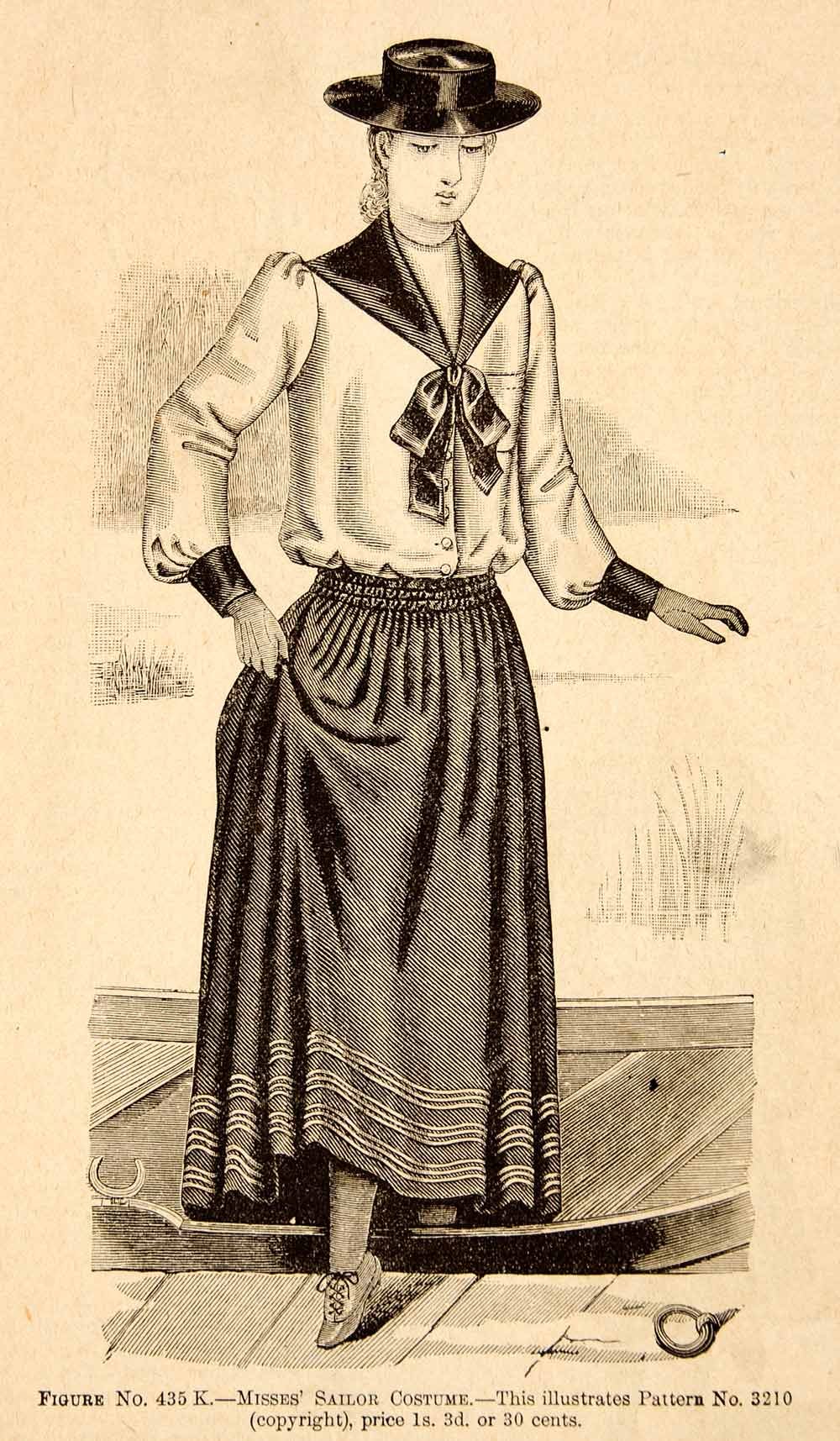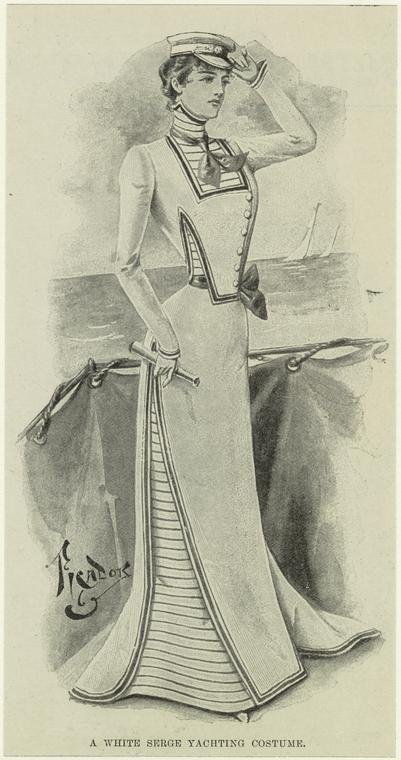I’m revisiting some posts from the archives, in some cases updating and expanding them. This post was first published this article in 2011.
When I set out to trace the evolution of the sailor dress, I intended a ‘brief history’, but as I delved into the fashion archives I found such a wealth and variety of nautical-inspired styles, I couldn’t fit it all into a single post.
Standardised uniforms for the Navy, featuring the distinctive square collar, were introduced in the early part of the 19th century. In the 1840s Queen Victoria commissioned a miniature version for the four-year-old Prince Albert Edward (the future Edward VII) for a trip aboard the royal yacht. Queen Victoria being the great trend-setter that she was (she’s also credited with popularising white for wedding dresses), the sailor suit became - and has remained - a perennial favourite for children's wear. By the 1870s the nautical motif had made the transition into ladies' clothing.
Early examples of sailor style were intended to be worn for appropriately nautical pursuits, such as jaunty "yachting costumes", which borrowed various elements from naval uniforms including braiding, buttons, and trims, as well as the classic collar.
According to Godey’s Ladies Book in 1895, “The yachting season is at hand, and the fashions this year show many charming yachting suits, all equally chic and effective.”
When swimming (as distinct from the earlier trend of 'sea-bathing' - literally being dunked in the waves) gained popularity in the late Victorian era, fashion again turned to nautical style for the new wave of bathing costumes.
Swimwear featured in La Mode du Petit Journal, June 1899
In the later Edwardian period, nautical styles took their first tentative steps away from the sea and into mainstream fashion; by the early 1910s, nautical had established itself as a style, and was starting to appear alongside other regular daywear. "A sailor dress is always stylish," announced the Sears catalogue in 1915.
This 1916 advert for Eaton's Department Store impresses the popularity, versatility, and practicality of “the indispensable middy”. Available in a variety of colours and materials ranging from sturdy cotton to slinky silk jersey, these are “endowed with a quaintness and grace that are most attractive and fit them for wearing on dozens of occasions.” The illustration shows middies worn by all age groups (sizes range from age 6 to a 44 bust: these were not reserved for juniors).
Nautical styles gained ground during the Great War as patriotic fervour ran high and fashion reflected military uniform.
Daily Mail, 1917. The model on the right is wearing a straw sailor hat with the word "Victory" on the hatband.
Middy blouses proliferated in the early 1920s, primarily as sportswear and school gym costume. It was also around this time, incidentally, that the middy blouse started to be adopted as school uniform in Japan, where it is still ubiquitous today.
Sears catalogue, 1922 featuring a middy blouse ensemble in mustard and red & white gingham
Middy blouses in the Sears catalogue, 1924
From the mid-1920s, the middy settled firmly into its activewear niche - it appeared in Butterick’s Delineator magazine in 1925 in hiking costumes (also suitable “for the gymnasium or for general sports wear”), alongside other sports clothing in a double-page spread.
The middy and nautical style waned in the later part of the decade, only for sailor styles to re-emerge in the early 30s in a new iteration - as we’ll see in part two of this series.





















